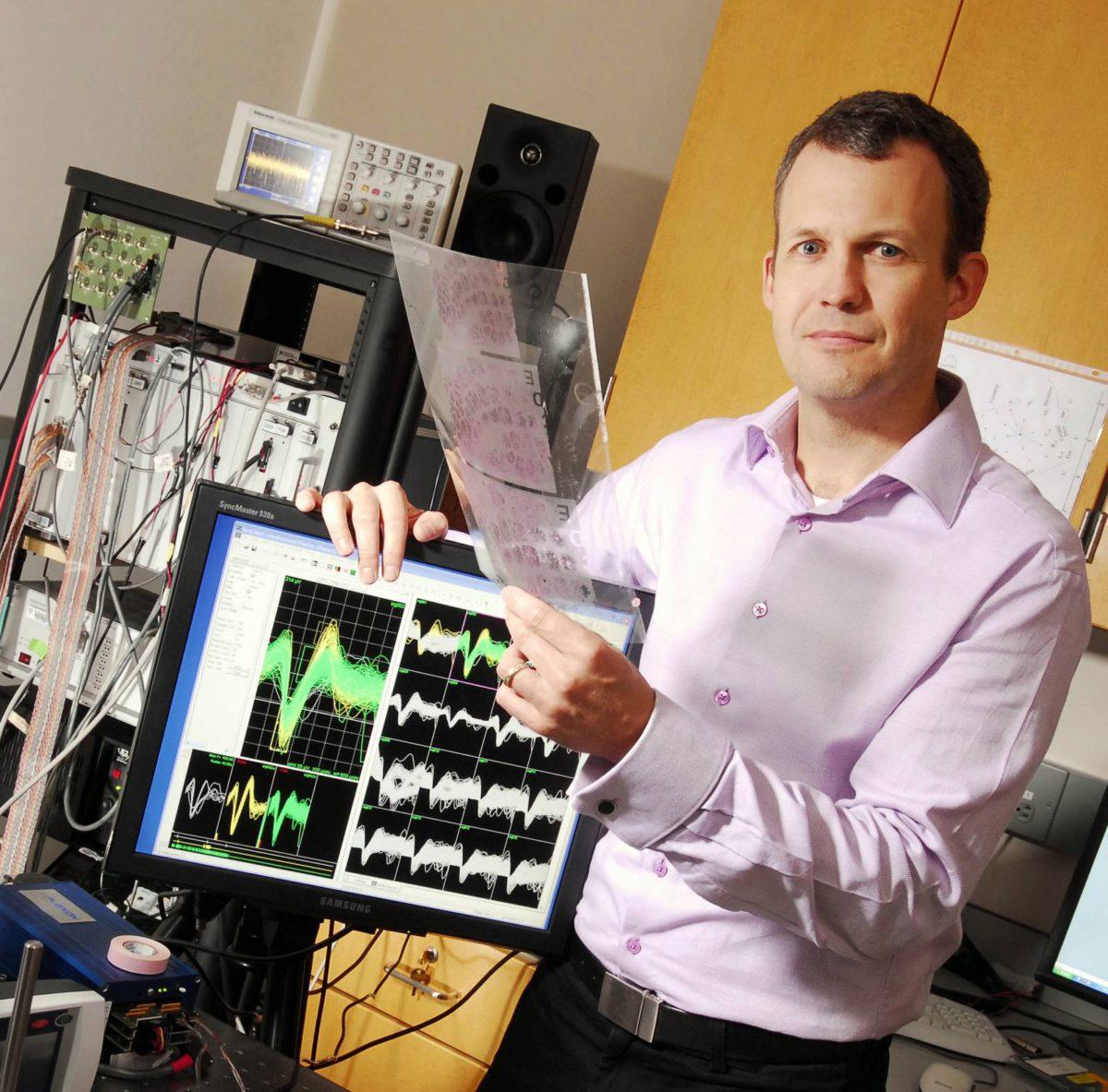
A new study in the Nov. 21 advance online edition of the journal Nature Neuroscience details the biological basis of this ability for rapid adaptation: neurons located at the beginning of the brain’s sensory information pathway that change their level of simultaneous firing. This modification in neuron firing alters the nature of the information being relayed, which enhances the brain’s ability to discriminate between different sensations — at the expense of degrading its ability to detect the sensations themselves. The study was led by Garrett Stanley, an associate professor in the Coulter Department of Biomedical Engineering. “Previous studies have focused on how brain adaptation influences how much information from the outside world is being transmitted by the thalamus to the cortex, but we show that it is also important to focus on what information is being transmitted,” said Stanley.
Research
For the experiments, Stanley and associates moved a rat’s whisker to generate a sensory input. Moving whiskers at different speeds or at different angles produced sensory inputs that could be discriminated. This sensory experience is analogous to an individual moving a fingertip across a surface and perceiving the surface as smooth or rough. While the whiskers were being moved, the researchers recorded neural signals simultaneously from different parts of the animal’s brain to determine what information was being transmitted.The results from the experiments showed that adaptation shifted neural activity from a state in which the animal was good at detecting the presence of a sensory input to a state in which the animal was better at discriminating between sensory inputs. In addition, adaptation enhanced the ability to discriminate between deflections of the whiskers in different angular directions, pointing to a general phenomenon.
Dr. Stanley
Dr. Stanley is an associate professor in the Department of Biomedical Engineering at Georgia Tech and Emory University. He graduated from Georgia Tech in 1992 and went on to receive his PhD from Berkley in 1997 in Mechanical Engineering. He served as an associate professor at Harvard University in the Division of Engineering & Applied Sciences before coming to Georgia Tech in 2008.
In the future, the techniques used in this study may be valuable for probing the effects of brain injury on this pathway and others, as a variety of different diseases and disorders act to change the degree of synchronization of neurons in the brain, resulting in harmful effects.
To view the original article, go here, for more information about Dr. Stanley and his research, go here.
